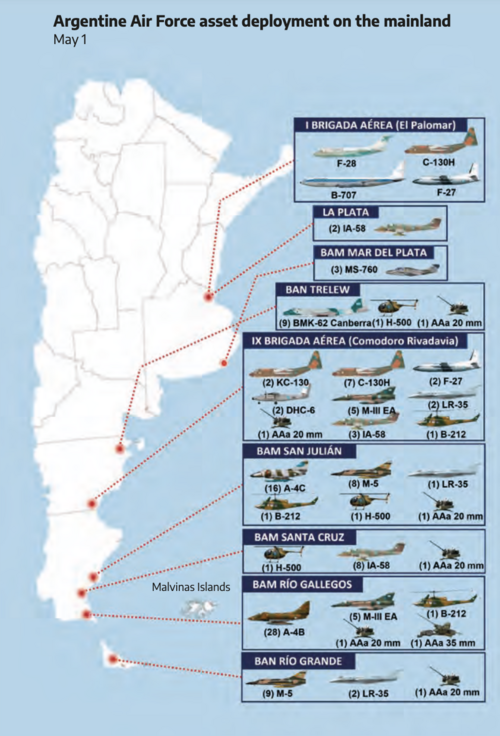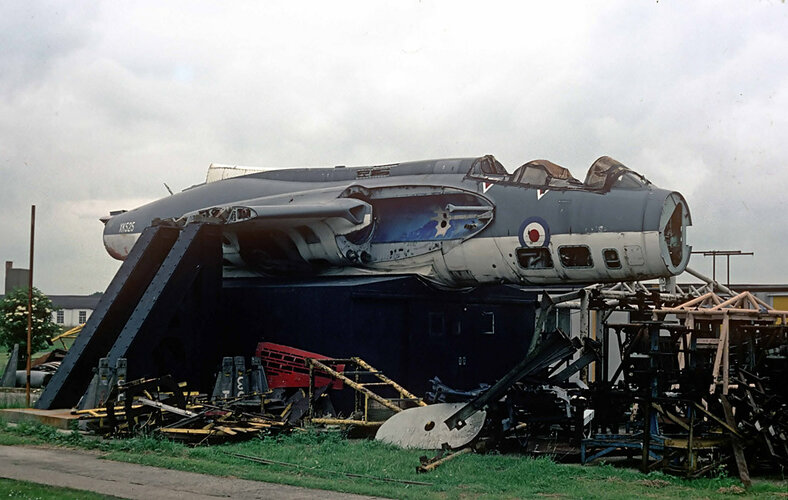Starting a new thread to discuss the best way for a carrier to attack airbases, circa 1982.
(From the "P1154 scenario" thread re: the RN's excessive focus on attacking Port Stanley, and the potential alternate path of attacking Argentinian bases on the mainland instead)
1) The military rationale - temporarily suppress forward airfields/runways or try to destroy an air force on the ground in a lightning strike?
(From the "P1154 scenario" thread re: the RN's excessive focus on attacking Port Stanley, and the potential alternate path of attacking Argentinian bases on the mainland instead)
1) The military rationale - temporarily suppress forward airfields/runways or try to destroy an air force on the ground in a lightning strike?
There has been an argument put forward, in a PhD thesis I think which may have become a book, that Stanley was something of a 'magnet' for the British planners and it absorbed far more ordnance and effort from Black Buck, Harriers, naval gunfire and later the British forces on the ground - they were fixated with destroying Stanley. Arguably they didn't have the proper means to do it.
At that time the RAF was developing JP.233 and of course munitions such as Durandal existed, 4 years later the French would use the rocket-propelled BAP-100 in Chad. Efforts to use Paveway with Harrier GR.3 LRMTS flopped too. There were effective means to destroy runways, the Task Force just didn't have any of them (well unless they really did have some WE.177A aboard...).
Even if the British had the best anti-runway equipment, it appears as a killer blow that knocks out an airfield for the duration is virtually impossible. To keep an airfield closed demands constant attention to hamper repair work and discourage makeshift operations. Maybe Port Stanley garnered too much attention for most of the war given that it was mostly used for resupply and evacuation. Then again it was used to fly in 4 x 155mm artillery pieces once RN shelling began and the 105mm pieces couldn't respond, as well as the trailer mounted Exocet launcher that hit Glamorgan and killed 13 sailors so it did give the defenders teeth.
Indeed there’s an argument that a simultaneous strike on Argentina’s air bases on the mainland would have been a better choice. Israeli Six Day war style - damage the runways first then destroy aircraft on the ground. Could have ended the Falklands air war on Day 1.
This was probably beyond the means of the RNs’ Harriers, but would have been an option with a conventional carrier with Buccaneers or Super Etendards, Durandals, buddy refueling, and good planning/training. The 4 main Argentinian airfields in the south were extremely vulnerable, with short runways (so easy to target) and ~60 aircraft crowded on aprons, there being only 16 hardened shelters and air defenses were almost non existent.
FWIW, discussion of whether aircraft aboard Royal Navy aircraft carriers could suppress Argentine air bases presupposes that they'd be operating under rules of engagement which allowed them to do so. It's entirely possible that they wouldn't be allowed to try, given the UK's concerns in OTL about keeping the conflict constrained to the area immediately around the islands.






